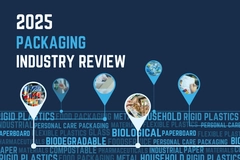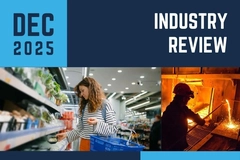
- Industry news
Industry news
- Category news
- Reports
- Key trends
- Multimedia
Multimedia
- Journal
- Events
- Suppliers
- Home
- Industry news
Industry news
- Category news
- Reports
- Key trends
- Multimedia
Multimedia
- Events
- Suppliers
Metsä targets international trendsetting with European biodiversity plan for regenerative forests

29 Aug 2023 --- Metsä Group is developing local biodiversity for its 20 mill areas across Europe, starting with Kemi, Finland, where it operates a paperboard plant with a bioproduct mill under construction. The biodiversity plan aims to modify land use on the Metsä Group Kemi site to improve the state of nature in the industrial environment.
“Our goal is that Kemi’s biodiversity plan becomes an international trendsetter in nature-based solutions in industrial and built environments,” Timo Lehesvirta, leading nature expert at Metsä Group, tells Packaging Insights.
“The biodiversity of the planning area is analyzed and various biodiversity actions will be taken to promote values of nature typical in the Kemi area. We also invite the city of Kemi to participate in the planning and implementation. The benefits offered by nature are also important for residents.”
The Kemi pilot project is now underway, with plans to introduce measures gradually to other mills over the next few years, using the operating models developed in the pilot.
Metsä Group also intends to make the mill areas’ biodiversity plans part of the environmental reporting of mills. In the next few years, the company plans to collaborate with its stakeholders to develop the plans for the built environment into internationally approved criteria and standards.
 Metsä Group shares that more than 12 hectares of meadows and sunlit habitats will be added to the Kemi mill area.Protecting forests and endangered species
Metsä Group shares that more than 12 hectares of meadows and sunlit habitats will be added to the Kemi mill area.Protecting forests and endangered species
The nature of Kemi’s region is diverse and includes different habitat types. The area, including the mill site, provides a habitat for numerous threatened species.
Through the plan, biodiversity in the area will be increased experimentally and by adopting new operating methods. As an example, Metsä Group shares that more than 12 hectares of meadows and sunlit habitats will be added to the Kemi mill area.
Only local vegetation will be used in establishing open habitats and these habitats will be made suitable for endangered species. Various other approaches to increasing the biodiversity of industrial environments will also be tested on the mill site.
“Our initiative expands the aim of strengthening nature from forestry to cover land use at the mill locations. We believe that regenerative forestry and regenerative land use bring added value to the company. The target is to integrate the results of biodiversity plans into part of the mills’ responsibility reporting,” stresses Lehesvirta.
“A long-term goal is to harmonize and mainstream biodiversity actions in the industrial areas and the built environment. We hope that the model developed with our partners will become part of general international practices in all industries.”
The fiber leader’s parent company is Metsäliitto Cooperative, helmed by over 90,000 forest owners.
Local collaborations
For the Kemi site, the company has partnered with the Villi Vyöhyke Association, an expert in the biodiversity of the built environment. It is working in close association with the local authorities and stakeholders.
“Metsä Group is showing courage, as well as an impressive and high ambition in protecting biodiversity in Kemi,” says Jere Nieminen, chair of Villi Vyöhyke.
“The scope of the new nature targets is exceptionally wide and varied, encompassing the built environment as part of regenerative land use. Metsä Group is a big operator, which gives our actions greater leverage for a wider cultural change toward the international mainstream of biodiversity protection.”
Furthermore, the mayor of Kemi, Matti Ruotsalainen, adds: “Metsä Group’s initiative is important for the town of Kemi. Together, we can develop and strengthen the pioneering role that the Sea Lapland region plays in protecting our nature. The coexistence of industry and nature benefits all of us.”
By Radhika Sikaria









